The real world is a scary place.
Not because it’s full of monsters, though we’ll get to that. It’s scary because it’s full of other people. Because it’s full of risks, and setbacks, and harsh truths. It’s scary because to truly look at it, you have to first look at yourself, and acknowledge what you see. Engaging with the real world means acknowledging and embracing every ugly, selfish thing that makes you You, and being honest with yourself is the hardest, scariest thing of all.
Monogatari is a story about liars.
Not overt liars, though we’ll get to those. People who lie to themselves. Who distance themselves from parts of their own personality, or replace their exterior reality with a happier, less judgmental internal one. Who want to believe there are monsters out there, because believing their antagonists are monsters means denying their problems are parts of their own heart. Fabricating a false self and a false reality, their lies spawn aberrations – reflections of the truth that wreak terrible consequences in the real world.
Araragi is one such liar, though the consequences of his lies are expressed more subtly than most. His reality certainly displays his smaller, understandable lies – when Monogatari rests on Araragi’s shoulders, the world suddenly finds itself devoid of people who don’t interest him, brimming with comedy, and laced with strange sexuality. But he’s a teenage boy, so none of that is particularly surprising. What really sets him apart is his instinct to “save” others, and outside of being worthless in the context of Monogatari, that by itself is its own kind of disease.
Though the aberrations of this universe often take physical form, defeating them requires attacking the root. A manifestation of absent self-worth can’t simply be destroyed – that self-worth must be regained. But Araragi fights against this, again and again, and over time it becomes clear this is his own aberration, or the nearest thing – a desire to take the pain of others that ends up spilling over into a complete devaluing of the self. His attempts to save Kanbaru might be nobly founded, but they completely disregard the feelings of those who value his own life. For every step forward, he manages to stumble ten steps back. This selfless selfishness takes its most extreme form when Araragi attempts to change the past – though he paints his actions as compassion, his thoughtlessness ends up creating a nightmare reality. He’s not a hero – he’s a teenager with a martyr complex, his selfless acts of heroism really only selfish expressions of his own needs, a blatant disregard for the feelings of the people who need him. And Araragi has not escaped the labyrinth – even through the end of Season Two, Araragi remains the foolhardy self-destructive fulcrum of the show, the one the others must tiptoe around as they make the choices and sacrifices necessary to help those beyond themselves.
Of course, Araragi is far from alone in wanting to externalize his demons. It has an obvious allure – if you believe there’s a monster in your closet, you can deny the monster in your heart. And monsters out there in the real world can be villainized, attacked, destroyed – you can even be rescued from them by others, avoiding personal growth altogether. Hell, you don’t even need to be hiding some unacknowledgeable scar to want to construct your own reality. In Japan and across the world, kids are waking up into a world that no longer offers the promises it once did – where the dream of a stable future is proving itself to be a collective aberration, a lie we’ve all decided to see as truth. And in light of that, it’s incredibly comforting to hide in personal realities. To make a world where the rules make sense and your failure can be comfortably quarantined as Not Your Fault.
Sengoku Nadeko exemplifies this instinct. Just as Araragi is a cynical interpretation of the girl-saving harem protagonist, Nadeko is Isin’s hypothesis of what one of those idolized “helpless little sister” characters might really be like. Hers is a learned helplessness – having realized early on that people leave her alone if she acts shy and flustered, she has slowly sculpted a reality of frightening, inhuman shadows, where her lack of initiative or engagement can’t really be her fault. She can’t stand up for herself, because she is the victim. She can’t pursue the boy she loves, because her love is an unrequited one. Ultimately, this need to justify her own actions through an antagonistic outward reality spawns an aberration – the Snake God, who “forces” her to lash out through the actions she secretly wanted to take all along. Nadeko surrenders utterly to her inner reality, allowing herself to believe there really are monsters out there and in doing so becomes a living representation of the monster inside herself.
A character like Araragi can’t help Nadeko – he’s too trapped in his own version of reality, and again, true growth has to come from acknowledgment of the self. But Monogatari is fundamentally an optimistic show, and not all its characters are so unable to embrace their own demons, and through doing so acknowledge and accept the consequences of their own personalities and being. One such character is Hachikuji Mayoi, and her story, unfortunately, isn’t a happy one. But another is Tsubasa Hanekawa, and her story is a triumph.
Three times Hanekawa faced down her personal demons – demons spawned not of simple expedience, like Nadeko’s, but out of personal, terrible circumstance. Alternately abused or ignored by her adopted parents, she internalizes everything, maintaining the pretense of a civil family life even as her friends question the seams of her cheerful disposition. Instead of acknowledging her own anger, and taking steps to improve her circumstances, she divorces herself from her own emotion – but that doesn’t make the emotion go away. Instead, her lie spawns an aberration, the Cat, who works both of its own will as an outlet for her stress and is even used as a scapegoat for her own willful destruction. Even acknowledging her anger doesn’t bring Hanekawa to actual self-awareness – it takes the appearance of a second aberration, the Tiger, before she fully embraces her hate, jealousy, and every other ugly emotion that makes up her full self. And that moment of embraced identity, when her deadpan acknowledgment of being turned down by Araragi dissolves into tears, is catharsis itself.
That by itself wouldn’t be a particularly uplifting note to end on. The best our heroes can hope for is destruction or honest heartbreak? Well, for three straight arcs after Hanekawa’s finale, that’s about all the optimism the show can offer. But during the very last arc of this season, a glimmer of actual hope is revealed. Hanekawa returns, older, wiser, with a stylish new haircut and a headful of ideas. In her confrontations with Deishu Kaiki, we see a Hanekawa unlike any other character in this series – a Hanekawa fully aware of her own identity, and thus able to see the true substance of others. As Hanekawa lays out her analysis of Nadeko with an acuity even practiced deceiver Kaiki is forced to respect, we see the small kernel of optimism at the center of all Monogatari’s sad, broken character studies. There actually is a light at the end of the tunnel. If you acknowledge yourself, if you face down your own reality and embrace your own monstrous instincts, that brilliant awareness can be turned outwards, used to cast a new light on the exterior world. We are not each condemned to be prisoners of our own realities, but in order to see and save others, we must see and save ourselves. Only then can we see beyond ourselves – only then can we see the monsters that surround us and, knowing full well our own demons make us who we are, smile, and offer our hand.
This optimism is made explicit by the show’s finale, where Kaiki finally extends this hand to the reticent Nadeko. Though he calls himself a master deceiver, that itself is something of a lie – his actual greatest power is his ability to see the truth. As he faces down Nadeko, so invested in her personal reality that she even rationalizes her stagnation as a legitimate embracing of her own flaws, he encourages her to fail. To stop being happy. To return from personal godhood to real-world personhood, where people will sometimes not pity you and sometimes hurt you and sometimes insult your trashy manga. Monogatari doesn’t make any false promises – it knows living is hard, and it knows that acknowledging your failings is only the first step on a long, painful path, where the future is always uncertain. Monogatari makes its characters ugly because it cares about them – because in spite of being a story about liars and the lies they tell, it wants to impart some hard, heartfelt truth. Sometimes we will make honest connections, and sometimes our connections will only cause us pain. But the pain and the hardship and the shame and the struggle of an honest engagement with the real world is the only thing worth anything – the only thing that can bring us towards the selves we want to be, and the only thing that can reveal the ugly, broken, beautiful people around us. Honesty is worth it.

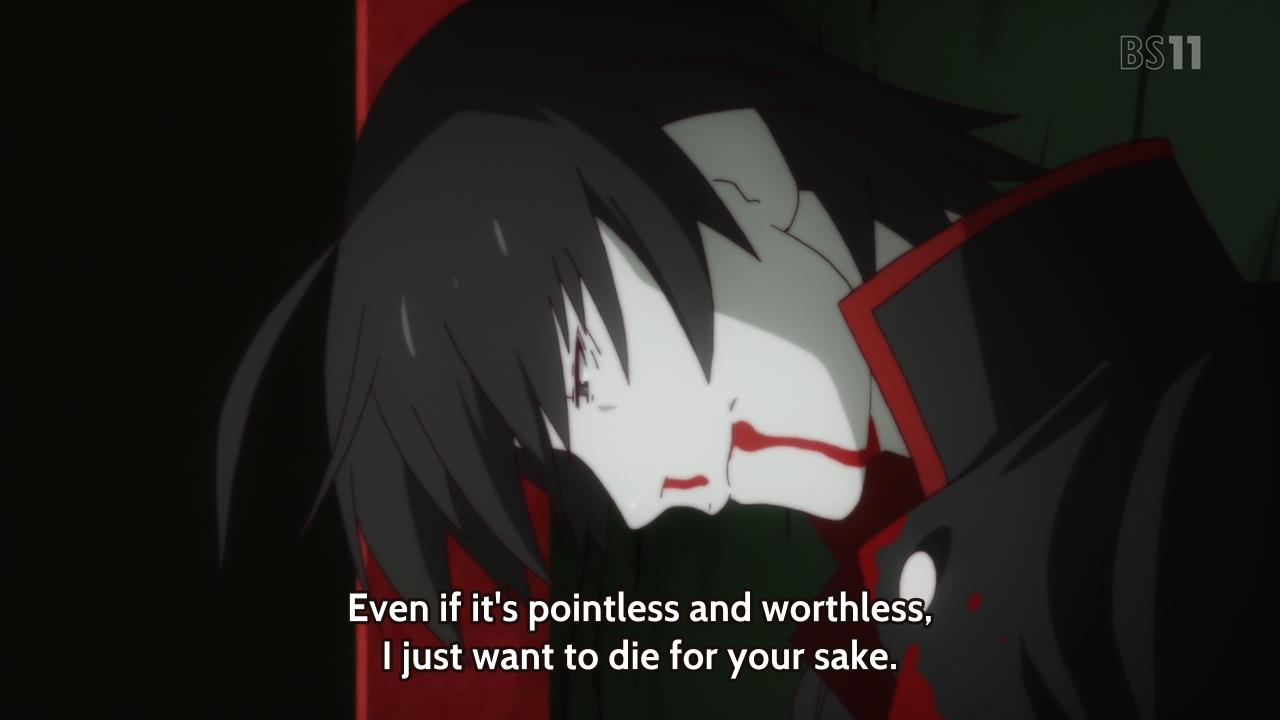
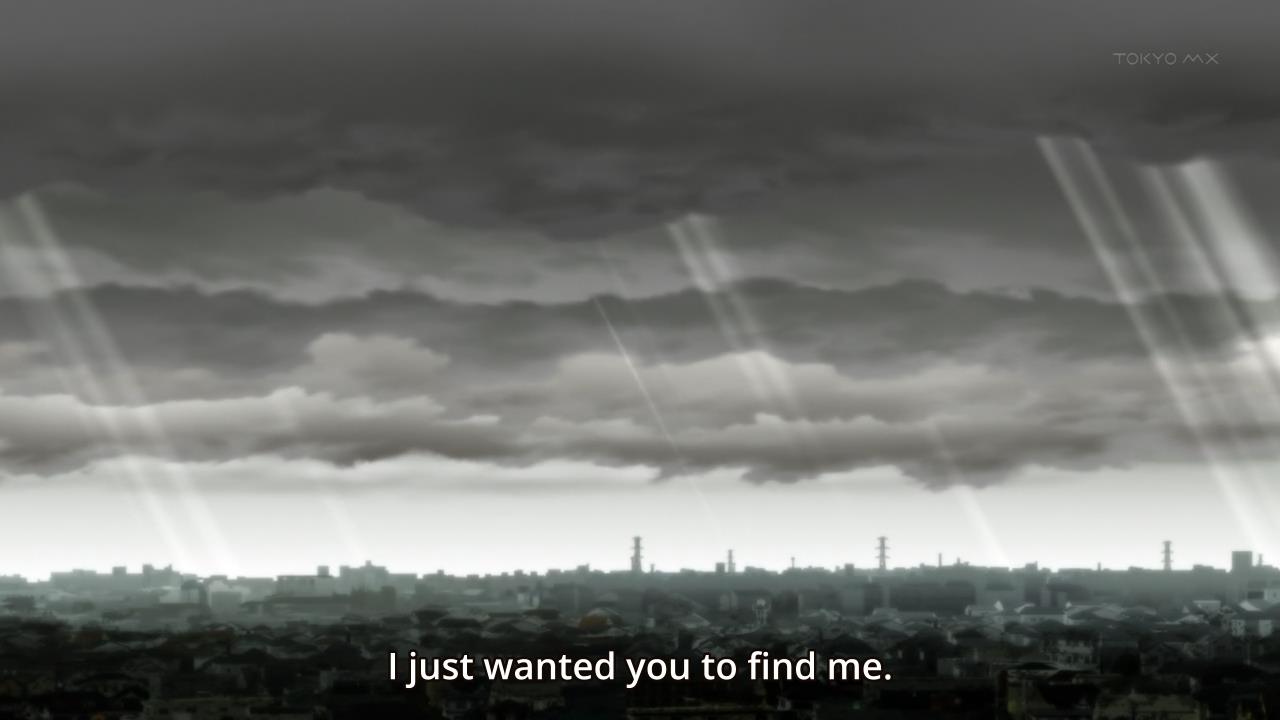
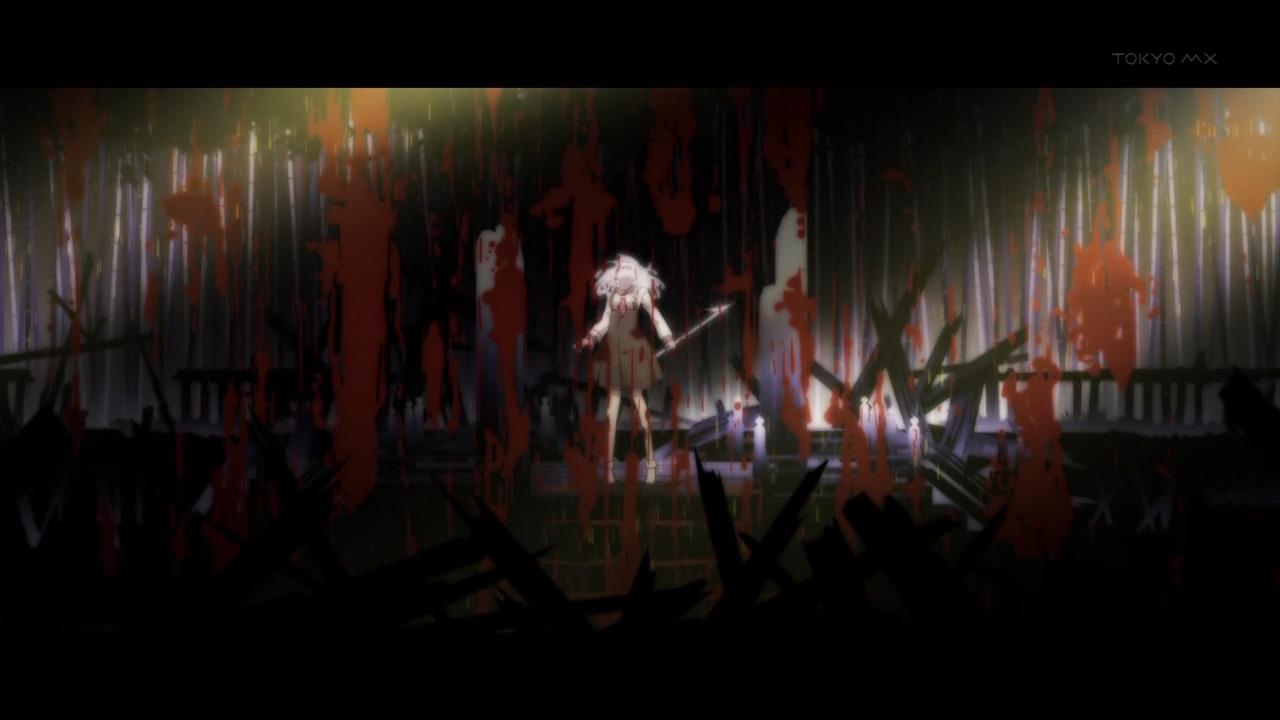
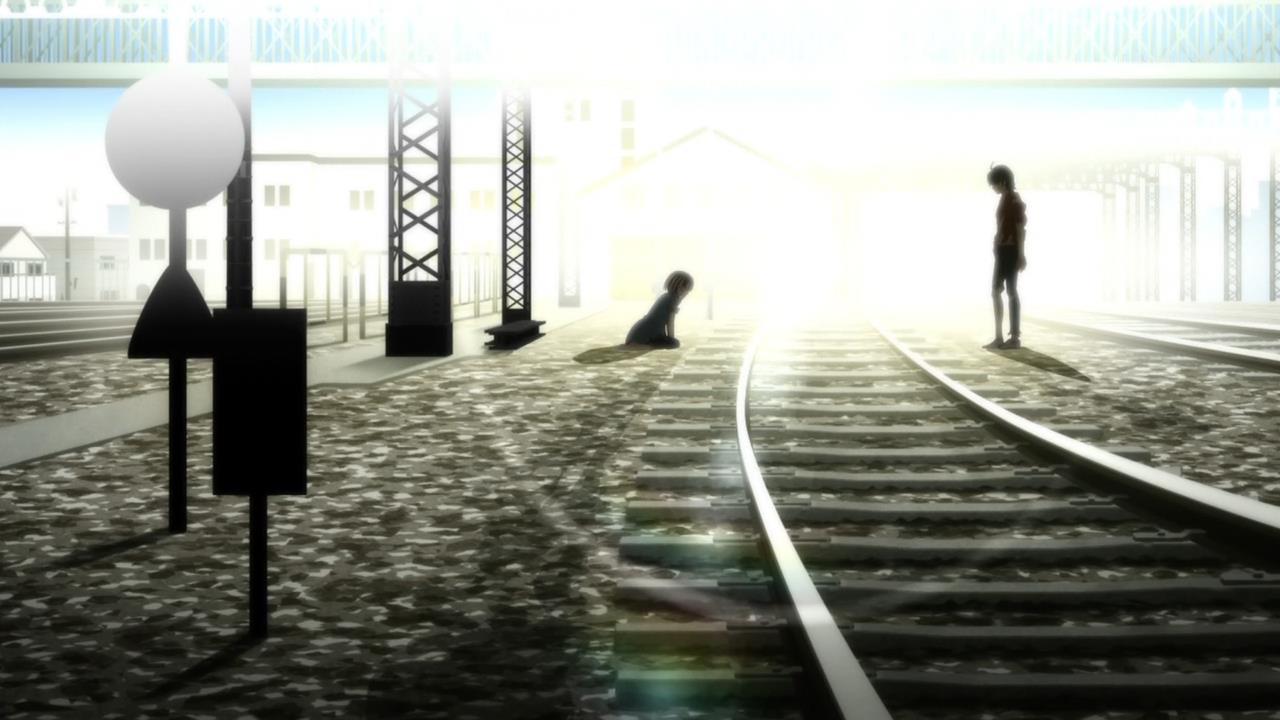
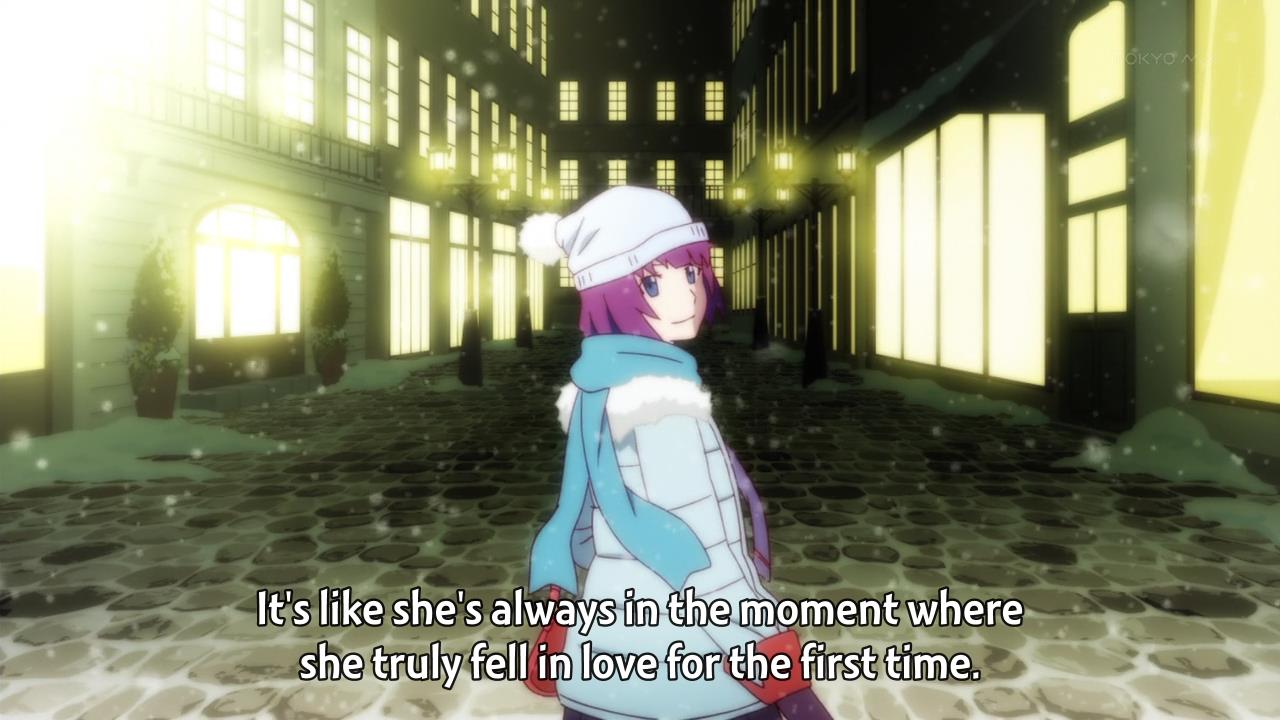
Beautiful!
Thank you for all your monogatari posts. It’s been a fun ride. 😀
You’re welcome! Glad you’ve enjoyed them.
This is really a pretty rich show, thematically.
Mayoi’s role (along with Nadeko) was actually always to show all the limits and contradiction od Araragi’s White Knight syndrome.
In Mayoi Snail, Araragi forces Mayoi to accept his help, and ends with the reveal he is actually the ones who needs help because of his own actions.
This is treated pretty lightly, but all the main points are here from the start.
And obviously, the two most recent Arcs about her didn’t even tried to hide this fact.
Yeah, Mayoi’s two recent arcs were certainly pretty direct. I’m actually kind of ready to see Araragi’s perspective again now that two arcs in a row have ended with him being directly told his presence only makes things harder.
Thanks for your essay!
I have been reading your episode posts all season as I watched the show weekly. But this essay gave me such a greater appreciation for it I think I want to rewatch the season again.
You’re very welcome! I’m probably going to rewatch the whole series again myself at some point – Bakemonogatari was one of the first shows I watched when I was just getting back into anime a couple years ago, and Nisemonogatari was the first show I wrote about semi-critically, so the whole series is kind of special to me.
I think the subtle character development in Araragi is nice to witness. People have been complaining that he’s static, but I don’t think he really is. The parting with Mayoi, the actual consideration for Kaiki’s words, these are small moments to show he’s changing. Most of his character development happened in Kizumonogatari, a shame SHAFT hasn’t animated it yet. Asides from his savior complex he was actually pretty suicidal pre-Senjougahara. See how in Nekomonogatari Black he wanted to die for Hanekawa. At that time he would’ve died for anyone – any stranger, he has that little disregard for his own life.
I know Araragi has a savior complex but he doesn’t save the people who don’t want to help themselves. Unlike Senjougahara Hanekawa didn’t want to face her own demons (again, referring to Nekomonogatari Black) using the Cursed Cat as an excuse, she wanted to be scooped up and saved by her own prince charming (which she appointed Araragi to be, even asking him if he wants to be her hero).
The problem with Hanekawa’s thing is the anime kind of flubbed key portions of the perspective we were supposed to get, yeah, she used the Cat as an accomplice in crime and scapegoat, but there was another side to that. They forgot to emphasize in the anime for Neko Black that Hanekawa created her own hero inside herself with Black Hanekawa that was emphasized in the novel(which Araragi reacted with a small amount of bitterness that she did that, which wasn’t shown in the anime of her not relying on him) and would be further expanded upon later in Neko White, where she confessed that the people she confided in shunned her because her family situation was unfixable and alien to them.
That was why the epilogue for White in the novel was so powerful, she stayed with Hitagi, but then decided for herself to walk back to a loveless home when she found out they got a rental place (this looked totally different in the anime, where we just see her ask for a room and that is it, whereas in the novel, she cried and mourned going back and leaving Hitagi’s home (they also skipped a vulnerable scene of Hitagi and her father that would have been golden for “humanizing” her character), but gave herself the courage to confront them and make them give her a room, but at the same time, its a pyrrhic victory at best.
I don’t think all that context changes the meaning of Hanekawa’s arc, but it does all seem like really rich stuff. I love the idea that she actually imagines Black Hanekawa as a personal hero, and the idea of people shunning her because her situation is too alien to their experiences rings really true and makes her seem even more sympathetic, since she actually did try to reach out in the past. I’ve been avoiding reading the translated LNs because I’m wary of how well the style translates, but I’m getting pretty tempted to look them up at this point.
Yeah, I’ve heard about Araragi’s early suicidal tendencies, and that definitely makes sense given what I’ve already seen. Still waiting on Kizu, though…
I agree he doesn’t actually save the people who don’t want to help themselves, but he certainly tries to. I think that’s part of why some people dislike Hanekawa’s character – her path towards actually acknowledging her own emotions was prolonged by Araragi’s attempts to save her.
Its better when you see that she stuck to him because he didn’t run when she saw the ugliness of her self and her home unlike other acquaintances. People rely on her, but that is about it. Reflect on some of the things she said as the Cat about chaining her Mistress down, and the viewpoint widens. Personally, I think that was one of the reasons she fell for him.
As for her thinking Black Hanekawa was her personal hero, there is another interesting thing; the caricature of Black Hanekawa in those funny drawings (the same artist who does Kaiki’s drawings) used in the funny episode previews always has a Kamen Rider-esque outfit, complete with belt. Since the sentai like stuff like Kamen Rider is basically heroism itself in Japan, its is a really cute thing to pick up here.
Pingback: Top Twelve Anime of 2013 | Wrong Every Time
So Araragi, Hanekawa, Mayoi, Nadeko, and Kaiki are compared and contrasted to great effect in support the themes you expound on here.
Do you mind making brief comments on a few of the other characters? The obvious one is Senjougahara, in that arguably she’s the only girl in S1 that accepts her exiled emotions immediately and wholeheartedly right off of the bat. (S1 Mayoi doesn’t really have a problem, Suruga’s jealousy isn’t really dealt with, but shelved through Hitagi’s compromise, and Hanekawa and Nadeko’s are dealt with through external means.) Then in S2, while there is a brief moment of denial when she locks up Araragi, she still pretty immediately turns around and decides to confront Kaiki, as well as appearing pretty aware of why she needed to do so. It’s been reiterated several times within the show that the reason Senjougahara is Araragi’s girlfriend, and not Hanekawa, is that the former dealt with her inner-monster-turned-external on the first try. (And unlike the other S1 girls sans Mayoi, had been seeking a solution to it for a while) She states that if Hanekawa hadn’t deferred her emotions (her desire to ask Araragi for help) time and time again, (until Kako) that things would have been different, and in turn Hanekawa expresses some envy that Senjougahara had succeeded in her ordeal on the first try. So in terms of worldly consequences, hers is the biggest proof of triumph. In terms of insight, Senjougahara takes turns having some interesting pondering conversations that analyze in a backhanded manner, and taking on Araragi’s small lies, as you put it. But as you also pointed out, in both of those seasons she’s portrayed as the idealized girl seen in Araragi’s perspective. I’ll have to watch Hitagi End, (waiting for all parts to be available on Hulu so I can watch it in one go) so I don’t know if that changes in Kaiki’s POV, and if it proves that the girl still has another arc incoming.
It’s arguable that Shinobu is still living in a form of self-denial. Her turning moment in S1 is glossed over until its consequences are expounded upon in the alternate reality, but she still seems oddly incongruous to the other girls when it comes to dealing with and accepting her inner conflicts. Was her main development in Kizu, as well?
There’s also the other un-animated stories: Hanamonogatari and the last few light novels. Perhaps things will prove to be consistent to the themes here by series’ end.
And shit, hell if I know if Karen and Tsukihi actually changed any over this time. Nise was still very much stuck in Araragi’s POV, and what with Nisio saying this was kind of his personal-fanservice novel he may not have intended for it, and the sisters, to follow the same themes as the rest.
I’d say Senjougahara and Shinobu’s arcs are both very far from complete. With Senjougahara, the problem isn’t denying her emotions at this point – it’s her lack of self-worth. This is touched on a few times in Hitagi End, and seeing Senjougahara from Kaiki’s perspective in general helps add a ton of context to her character, but it’s present throughout the series – like Araragi, she doesn’t really consider herself as a person of value, and her confident performance is really just a shield. This also makes her very insecure about her relationship with Araragi – in conversations with Hanekawa and even when talking about Nadeko, she expresses extreme fear that Araragi will leave her. I think this is Senjougahara’s greatest existing weakness.
As for Shinobu, at the moment she’s extremely emotionally dependent on Araragi. Though Araragi admits they have a unique bond, he regularly takes her presence for granted – something that was explored lightly in Shinobu Time, but not actually resolved. In contrast to this, the second arc of S2 proved that to Shinobu, Araragi is the entire world – without him, everything else is worthless. Either she needs to gain more solid grounding in the world, or they need to mutually level the dependency that currently exists within their relationship.
That’s my read on those two. As for the Fire Sisters, I think we need more information – Karen Bee explored how Karen exists within a simplified justice-versus-wrongdoers reality to some extent, but that was also resolved by Araragi’s interference. I’m pretty sure each of them still have another arc to go.
This is like a week late so I’m not sure if it will be read, but I think the very idea of Shinobu having an arc is a bit odd. While it’s easy to think of her as a character, for obvious reasons, isn’t it equally apparent upon examination that she is nothing more than Araragi’s personal monster? She is the Black Hanekawa to his Hanekawa, the Kuchinawa to his Sengoku. Heck, she lives in his shadow! Maybe this is a bit less apparent than it should be since we skipped Koyomi Vamp.
At any rate, I’ve always taken it as a given that Shinobu is a reflection of Araragi’s personal issues. I suppose in some sense you could interpret that to mean that her arc is also his arc, but quite frankly his arc is supposed to be about cutting her loose. Oshino told him flat out, way back in Nadeko Snake, that the only way he can become human is to let her die (ie: stop feeding her blood). Now who else in this series asked their monster to let them become human? If you answered Hanekawa, and I know you did, then you’ve been paying attention. And if the new Hanekawa represents attaining self-awareness, then following her example is probably not a bad thing.
Now, Oshino could be wrong. I guess. But I think Shinobu is a fairly obvious mirror of Araragi anyway. Like him, what she desires most is to die for someone. Seen most obviously at the end of Mayoi Jiangshi. Like him, she undervalues herself to an extreme while projecting infinite value onto others. Heck, you could even argue that all of Arargi’s self-worth was given to her instead of him, since as you noted he is her entire world. She’s not quite the same as Kuchinawa or Black Hanekawa because instead of being created by a lie she has her own personal history, but she still represents Araragi’s biggest lie to himself: that he can save others. The only way he can begin to move forward is to let her die, for his own sake.
…which, uh… kinda contradicts the fact that Shinobu has to exact same affliction as him. The only way she can move on is, conversely, to accept his mortality. To not be the person who destroys the world in a tantrum for failing to save a single person. So either they both die, which is hardly moving forward, or Shinobu isn’t a person. She’s a monster.
I guess I’ll need to see what Koyomi Vamp has to say about their relationship, but it seems like she’s given so much more of an independent role, personality, and purpose than characters like the Snake or Black Hanekawa. I disagree that what she most wants is to die for someone – I figured both the second and fourth arcs of this season made it clear that her greatest emotional need is her fear of being alone. The idea that allowing her death will be his great emotional turn is a very compelling one, but I don’t yet see that as being baited by the text – it could certainly happen, and it would work, but I don’t yet see a reason to assume that will happen over any other resolution.
I guess the big indicator that she’s a reflection of Araragi is her clear overt status as both an aberration and “Araragi’s shadow,” along with the fact that there is no other aberration reflecting Araragi’s character flaw. But it seems like the weight the show itself gives to both their relationship and Shinobu’s own issues (I mean, she has a named character arc, she’s considered a central character in her own right) would indicate she has her own resolution to reach. I don’t see the clear link between Araragi’s failings and Shinobu as a character that you do.
I think people are getting the wrong idea of what the “monsters as metaphors” thing really is about in Monogatari. Shinobu is real, and the Meddlesome Cat was real. This was explained in Neko Black, but the Cat was a male spirit (seeing as it talks with male pronouns) and became one with Hanekawa and she turned it into her personal “hero”, but it did actually exist(the monologues that were cut from White helped elaborate this better), otherwise her being taken over after being cut by Kokoro-watari would not have happened. Nadeko’s situation is different, as she recreated the Polar Snake God by becoming a god herself with the talisman, but the Snake she saw was her delusions, thus why no one could see it but her.
Shinobu is an actual character, and Kizu really kind of hammers it home that despite him meeting her when he was at his worst, she is a real, individual, and not just a metaphor. This will become clearer when we see Suruga Devil later this year (we hope).
Glad to hear it! I personally feel Shinobu’s actually one of the best-defined and most compelling characters in the show, so I’m happy she’ll be getting more development/screen time.
Pingback: Top 30 Anime of All Time | Wrong Every Time
Pingback: Top 30 Anime Series of All Time | Wrong Every Time
Pingback: Of Epistemological Positions: Monogatari and the Death of Gods | therefore it is
Pingback: Monogatari: Is She My Sister? | therefore it is
Pingback: Summer 2014 – Week 5 | Success of Failure
Pingback: Success of Failure
This is of course coming absurdly late and I don’t know how your website notifies you of comments but this has to be one of the best analyses of Monogatari I’ve ever read. Really all of your blog posts on Monogatari are just beyond satisfying to read. I always fear anyone trying to boil down anything as complex as this show but you did it. A+. 100%. Consider me a jealous fan.
In all seriousness, I’ve had a few incomplete ideas I’ve made into half-assed Reddit posts that I’d be glad to pass over to you to do them justice.
I’m curious if you have a follow-up to this since I know you’ve watched Hanamonogatari since then. It was an incredible arc for Kanbaru as I’m sure you noticed so I’m dying to see how those new developments mesh with the thoughts you outlined here.
Pingback: Nadeko Medusa – Review | Wrong Every Time